I don´t know where to start. When I think about diving in Indonesia I get the chills. In a good way. My eyes can even start to tear up a bit. That’s how absolutely wonderful it is. I have had some of the best dives of my life here. I have seen things I could only dream of seeing. I have had adventures and met people that fill my heart with so much warmth and happiness. Regardless of how many superlatives I use, I won´t be able to describe just how amazing it is to dive in Indonesia.
Indonesia is made up of 17 805 islands. 17 805 islands! The opportunities to travel and explore are endless. Each island with its own special vibe and nature. All these 17 805 islands are surrounded by crystal clear water filled to the rim with all kinds of marine life. Coral reefs, hard coral, soft coral, colorful reef fish, graceful manta rays, mola molas (sunfish), white tip reef sharks, blacktip reef sharks, dolphins, whale sharks, thresher sharks. You find lots of protected national parks here, unexplored areas, easy relaxing open water dives, challenging currents, drift diving, macro diving, muck diving, night diving, deep diving, cave diving, night diving, you name it, it’s all here. And as if that wasn’t enough – in most places, there are no other divers to be seen. Indonesia is every divers dream and an absolute paradise.
Home to over 25% of the world’s fish species and over 72% of the worldwide coral species, Indonesia is the world’s epicenter of biodiversity. Indonesia has the greatest variety of marine life, alongside the Philippines and a small number of other Coral Triangle destinations. It is basically a must-visit if you want to explore the underwater world at its best.
The ultimate guide to diving in Indonesia
When to visit | Best Dive Seasons Around Indonesia | Top dive destinations in Indonesia | Raja Ampat – West Papua | Bunake – Sulawesi | Pulau Weh – Sumatra | Komodo National Park – East Nusa Tenggara | Alor – East Nusa Tenggara | The Banda Islands – Molukas | Nusa Lembongan, Nusa Penida and Nusa Cenigan – Bali | The Gili Islands – Lombok | Good to know before you go
When to visit
Indonesia is a year round scuba diving destination. It doesn´t matter when you go, even if the conditions change the seas surrounding this magical place offers world-class diving at any time. You’ll just need to make sure you’re diving in the best region for that time of the year. The monsoon season is from December to June. Visibility may not be as good during that season, however, certain locations like the Komodo Islands are a diver’s dream during this time due to an influx of mantas. Between May and September, the days are dry and sunny. However, during the monsoon season temperatures remain high with intense tropical downpours that only tend to last for a few hours, making a trip during this time still as enjoyable as during the dry season.
Best Dive Seasons Around Indonesia:
Gili Islands July-Aug, Dec-Jan
Wakatobi All year, best diving March – Dec and July-Aug
Komodo All year, May/June and Sep/Oct best diving, Dec – Feb Manta season
Raja Ampata Sep-Apr Manta season, Good viz Nov-March
Bali Best diving May – Nov, Mola Mola Aug-Oct
Ambon Nov – May
Lembeh July – Aug
Banda Islands Mar-Apr, Sept-Dec
Pulau Weh May – September
Top dive destinations in Indonesia

1. Raja Ampat – West Papua
Raja Ampat is the holy grail of diving in Indonesia. It hosts the greatest number of species of fish and coral in the country and it doesn´t matter how many times you visit, you will never cease to be amazed. This breathtakingly beautiful group of islands located in West Papua is probably mostly a hidden gem because it is so remote. It will take between 30-45 hours, several flights, buses, taxis, and boats to get there from Bali. But oh boy is it worth it!
The jungle-covered Papuan islands are located in the middle of the Coral Triangle. The spectacular colorful reefs, covered in hard and soft corals, are home to swarms of small fish like damsels and fusiliers as well as bigger reef fish like batfish, surgeonfish, and sweetlips. But it doesn´t stop there. You get very large species as well like bump head parrotfish (the size of humans), and napoleon wrasse as well as pelagic species including schools of tuna, trevally, barracuda, and mackerel. You also find the world’s largest fish, the whale shark, and majestic manta rays gliding through the waters around the islands. To top things off Raja Ampat is also an amazing dive spot for macro lovers. Frogfish, pipefish, blue-ringed octopus, pygmy seahorses, and nudibranchs amongst a whole bunch of other tiny species.
I stayed at Raja Ampat Biodiversity Dive Resort the last time I was there. It is not the cheapest option of dive resorts, but it is amazing. The simple bungalows are located right on the beach, the three times per day home-cooked meals keep you well-nourished and loved and the staff, as well as the other guests all, become your one big family. Even if diving is the focus here the staff is happy to take you on other adventures as well.
If you want to save money as well as support the local population I suggest staying in homestays around the islands. There are plenty and they all make you feel more than welcome.

2. Bunaken – Sulawesi
Sulawesi offers plenty of world-class dive spots. Most famous amongst divers is probably Bunaken Islands, which rapidly also became one of my favorites. The Marine Park is full of marine life, and when I say full of, I mean full of. You can spend an entire dive in the exact same spot, without moving a fin and you are guaranteed to see more varieties of species than in most other dives around the world. Bunaken Islands are particularly known for the crystal clear waters surrounding them. This means that the visibility is usually as far as your eye can see. No joke. This makes it a great spot to see big things like whale sharks (saw at least a few on each dive), eagle rays, and sharks. However, the Bunaken Islands are still mostly known for the great macro diving here. There are beautiful steep walls covered with the most amazing coral and it is like looking at a painting. In every spot, there are dozens of tiny species to discover. ….and at the same time, you can just turn your head and stare into the deep blue for the bigger fish. Diving around Bunaken you can see 400 species of coral and more than 2000 species of fish.
Bunaken isn´t only amazing underwater, but also on land. The island is a truly beautiful, a tropical jungle surrounded by mangroves running into the ocean. The locals are happy to show you around and invite you over to meet family and friends.
Located about a two-hour drive away and a short boat ride from Manado, the capital of North Sulawesi, you find THE paradise for muck diving. Many of the species in the region are endemic and only found here. This is the only place in the world where you can observe these species. Most dive sites are only a few minutes away by boat from the island. On the black sand seabed, you will find species like Mimic Octopus, Rhinopias, Mandarin fish, Pygmy seahorse, Blue ring octopus and so on and so on. Because the things you can find here at the bottom of the sea are endless.

3. Pulau Weh – Sumatra
Located in northern Indonesia, this beautiful, unspoiled volcanic island is located at the tip of the large island of Sumatra and is the meeting point for the Indian Ocean and the Pacific. Tourism here is scared and because of that Pulau Weh still feels wild and untouched. This means you won´t find as many dive facilities as in Bunaken for example, but the ones that are there all keep a high standard. Even if the rest of Sumatra has become a tourist destination Palau Weh is a protected nature reserve and you´ll encounter a lot of rare species both underwater and on land.
The best time to dive in Pulau Weh is during the dry season from April to November.
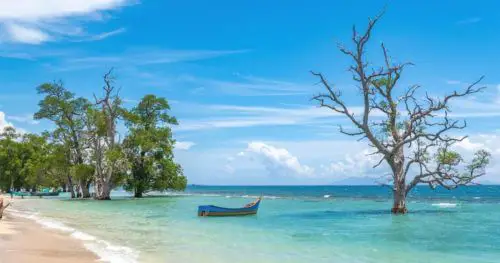
4. Komodo National Park – East Nusa Tenggara
I´ve visited Komodo National Park 4 times. That´s how amazing it is. However, it is becoming more and more well-known and it is easily accessible. This means it no longer only draws divers to visit but also regular tourism. With that being said, it is still pretty authentic and the marine life is definitely still amazing.
Komodo National Park is listed as a UNESCO World Heritage Site since 1991. It is known for the famous Komodo dragon. The Komodo dragon is the world’s largest lizard and an endemic resident of the island. But that´s not what you come for. You come for the marine diversity.
The national park consists of 28 islands surrounded by different marine environments such as pinnacles, impressive drop-offs, and beautiful drift dives. As the currents here, like in a lot of other places in Indonesia can become very strong it is recommended that you have done your advanced diver course and preferably have done a couple of extra dives before heading here.
I have seen anything from pygmy seahorses to dolphins here and the underwater world of Komodo makes me keep coming back. I have gone on a liveaboard with Komodo Dive Center on each of my visits here and I cannot fully express how amazing the experiences have been. The team is so professional and makes you feel like a part of the family. They are always first on-site, giving you the opportunity to actually spot rare and “scared” animals. Komodo Dive Center offers day trips as well as half and full week liveaboards, something for everyone and every budget.

5. Alor – East Nusa Tenggara
Alor, east of Komodo and Flores is a hidden gem in Indonesia. Since it offers just as amazing dives as the other popular dive destinations it is hard to say why it has remained hidden. …maybe because it’s just next to Komodo and Flores and requires more travel. However, it has kept the destination unspoiled and offers spectacular coral reefs with great diversity as well as stunning scenery. It is great for muck diving and has one of the largest anemone fields in the world. Due to the sometimes strong currents, you will also encounter the big stuff here and there is really no reason why not to visit. Due to its strong currents, though, Alor is generally more suitable for experienced divers.
In the Alor archipelago, the local fishermen only use sustainable fishing methods so that the reefs would not get polluted by fishing nets. A great effort has also been made to prevent overfishing in the area and therefore this dive destination is covered with incredibly colorful healthy reefs and has extremely diverse marine life. The islands are volcanic and that has created great underwater topography. You will have a chance to spot the smallest nudibranchs as well as seeing huge whales.

6. The Banda Islands – Molukas
The Banda islands consist of seven inhabited and numerous uninhabited islands. The two central and highest-populated islands, Banda Neira and Banda Besar, are located within the national marine park “Taman Laut Banda” which was established in 1977. Due to the great depth of the Banda Sea, the coral reefs are less affected by climate change than the reefs of West Indonesia.
Because of this, the coral diversity in the area is extremely high, compared to the already high diversity in Indonesia.
To hit the best time for diving here you should go either in March or April or from mid-September until late December. During the other months, the sea can get really rough, and it is not a pleasant experience, even if it is still possible to dive. In the months of January, June, and July the dive operators are all closed due to safety regulations.
The waters are crystal clear and visibility can reach up to 40-50 meters/131-164 feet. Because of the depth of the Banda Sea, the waters surrounding the islands are a meeting point for pelagic predators such as Hammerhead sharks and tuna. There are steep walls, Sea-fan gardens, and huge Barrel sponges to be seen while diving and there are some great muck-diving spots in the harbor area. The waters are also home to the Napoleon Wrasse of various sizes, and you will spot several on each dive.

7. Nusa Lembongan, Nusa Penida and Nusa Cenigan
Nusa Penida, Lembongan, and Ceningan form a group of three islands off the South East coast of Bali. It is a great destination to spend time relaxing and exploring but more than that it is an amazing place to to go diving in Bali. The islands are located right outside of Bali and are super easily accessible by boat. People often say that Nusa Lembongan is like Bali twenty years ago. The vibe is super chill and you can easily get stuck here for longer than planned.
Even if the dive sites around the islands aren´t many, they are excellent, and the marine life keeps changing during the day and the months of the year. Just as in many other places in Indonesia the currents here can get pretty strong and in general it is only recommended for more experienced divers. However, if you choose a reputable dive center, they will make sure you reach the required level before taking you out into the deep blue.
Most dives here are drift dives, relaxing and slow, or exhilarating and fast. It is like watching a movie of an aquarium pass by your eyes, it might be in slow motion and it might be in fast forward. Either way, it is spectacular. The waters offer an enormous amount of marine life and even if you easily can see 5-meter wide Manta Rays here or dolphins or even Pilot whales, the thing the draws divers from all over the world to here is the hope to see the Mola Mola (Oceanic Sunfish), the largest bony fish in the world. I had been coming here year after year without spotting one. Until I spotted my first one and since then it is like I broke the spell. After that, I kept seeing this magnificent creature on almost every dive to the famous dive site Crystal Bay. The average Mola mola is roughly 8.2 feet/2,4 meter by 5.9 feet/1,74 meters, but they can grow as large as 14 feet by 10 feet.
I highly recommend Scuba Center Asia. The owners Kim and Bas are a lovely Dutch couple that greets you with smiles and loves every single dive they go on. The staff is super cute and knowledgeable, and they make sure to adjust the dive sites to the optimal conditions. As if that wasn’t enough the Bar is also the best place to hang out after diving. Have a few drinks during happy hour, a delicious meal, play some pool, and exchange dive story after dive story. Scuba Center Asia offers accommodation with the dive courses, and it really feels like a home away from home.

8. The Gili Islands – Lombok
Although the Gili Islands themselves are pretty touristy, yet small, they are still not famous for being a dive destination and that makes the diving here pretty good. The islands are located not too far from Bali and easily accessible. The islands are surrounded by many coral reefs and magnificent pinnacles and are suitable for all levels of divers, even beginners. There are plenty of options for you to take your PADI certification here should you wish.
You will see so many turtles diving in the Gilis you will even stop getting excited about it at some point. …if you are lucky you will spot the rare hammerhead shark here.

Good to know before you go
1. The waters of Indonesia can be pretty moody so make sure to choose a destination and dive center that is suitable for your skill level. If it is stated that currents can be strong it means that they can be really really strong. We are talking hold on to a rock and your regulator strong. No dive center will ever purposely put you in danger, but in the end, it is your responsibility to not dive above your ability and level of knowledge.
2. Be sure to research the dive operator prior to signing up for a course or dive. Even if dive operators are obliged to follow rules and regulations, they don´t always do so. Check their accreditation and try to get first-hand recommendations from other divers.
3. Most dive shops will have the equipment to rent but the quality varies. Check the reliability of rental gear and the air quality of the tanks. Again, it is not a game to play or a risk you should be willing to take as poor equipment can have fatal outcomes.
4. Once you have found a destination that suits your skill level and a dive operator that is reliable it is time to enjoy! Keep your mind open for new experiences. Before I went to Indonesia I was all about the big stuff and never saw the charm in the small things. That completely changed when I came to Indonesia and every inch is covered with something tiny and beautiful. It becomes a treasure hunt that never ends. In the same way, maybe you are into the small stuff and the Mola Molas and giant Mantas will trigger something new within you.
5. Invest in your own dive computer. If you plan on diving a lot it is worth it to invest in a dive computer. You don´t need a fancy one, but you are responsible for your own diving and therefore it is a great investment. The simplest model goes for around 100 USD. Most dive operators offer dive computers for rent, but after a few dives, you could’ve just bought your own.
6. A lot of places offer accommodation with their dive courses, so make sure to check that before making any other reservations for accommodation.
7. Travelling in Indonesia can be time-consuming so take this into consideration when planning your dive holiday.
8. Temperatures in the water can change rapidly and changes throughout the year. All dive centers offer wetsuit rental, however, sometimes it is not enough. If you have a rash guard I suggest that you bring it as well, as it might come in handy.
Which place is at the top of your bucket list for diving in Indonesia? Let us know in the comments below.
Like it? Pin it ?



Related Posts
Your Best Guide to Diving in Raja Ampat
The Raja Ampat archipelago is paradise on earth. For divers and non-divers alike. This remote group of islands is pictured over and over again in magazines, travel blogs, postcards, and more. Because let’s be honest here, the rocky islets surrounded by the clear blue...
The 11 best spots for diving in Bali
When I think about diving in Bali I think about colorful corals, massive schools of fish, large pelagic species, shore diving, muck diving sites, wreck diving, cave diving, manta rays, and mola molas. Bali offers great diversity for divers of all levels. This little...
Canggu Villas Bali
The options of villas available in Canggu, Bali are endless. With it being the most popular spot in Bali now for tourists and ex-pats alike you’ll be spoilt for choice. Of course, you can stay in a hotel or guesthouse still but there are some incredible villas in...
Is it Safe to Travel to Bali at the Moment? By Someone in Bali
I originally wrote this post to answer the question of "Is it safe to travel to Bali at the moment?" because of the earthquakes and volcano eruptions that had been happening around Bali. UPDATE CORONAVIRUS SAFETY IN BALI: If you're looking at this post at the moment...
Bingin Beach Bali
Bingin beach, in the Pecatu area, is one of the cutest beaches in Bali by far. Unlike other nearby areas where most of the restaurants and bars are situated upon the cliff looking down in Bingin, they’ve built everything on the cliffside and it makes for a beautiful...
Green Bowl Beach Bali
Green Bowl Beach, in Bali, is a very quiet, small tucked away surf beach in the Ungasan region of Bali. It doesn’t get that many people to it at any one time most likely due to it being situated down one of the largest amounts of steps of any of the beaches in the...


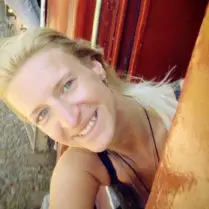


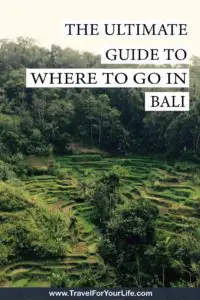

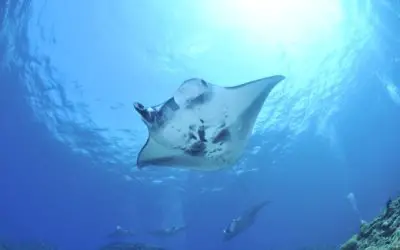
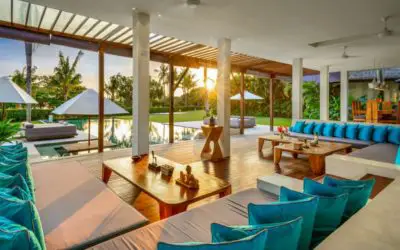

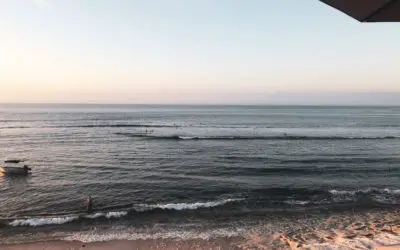


0 Comments
Trackbacks/Pingbacks